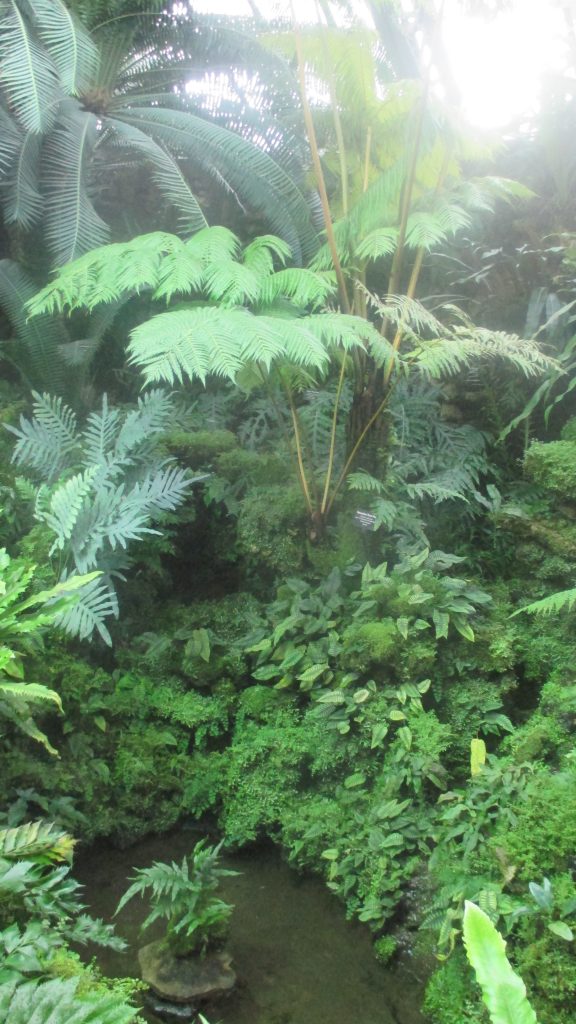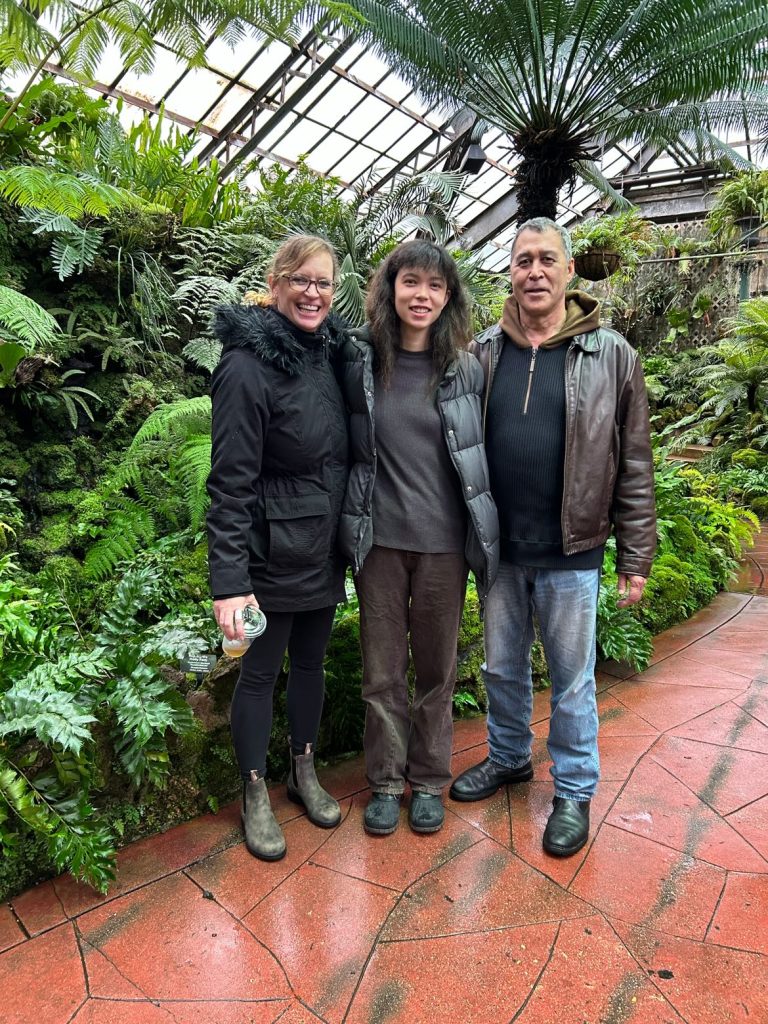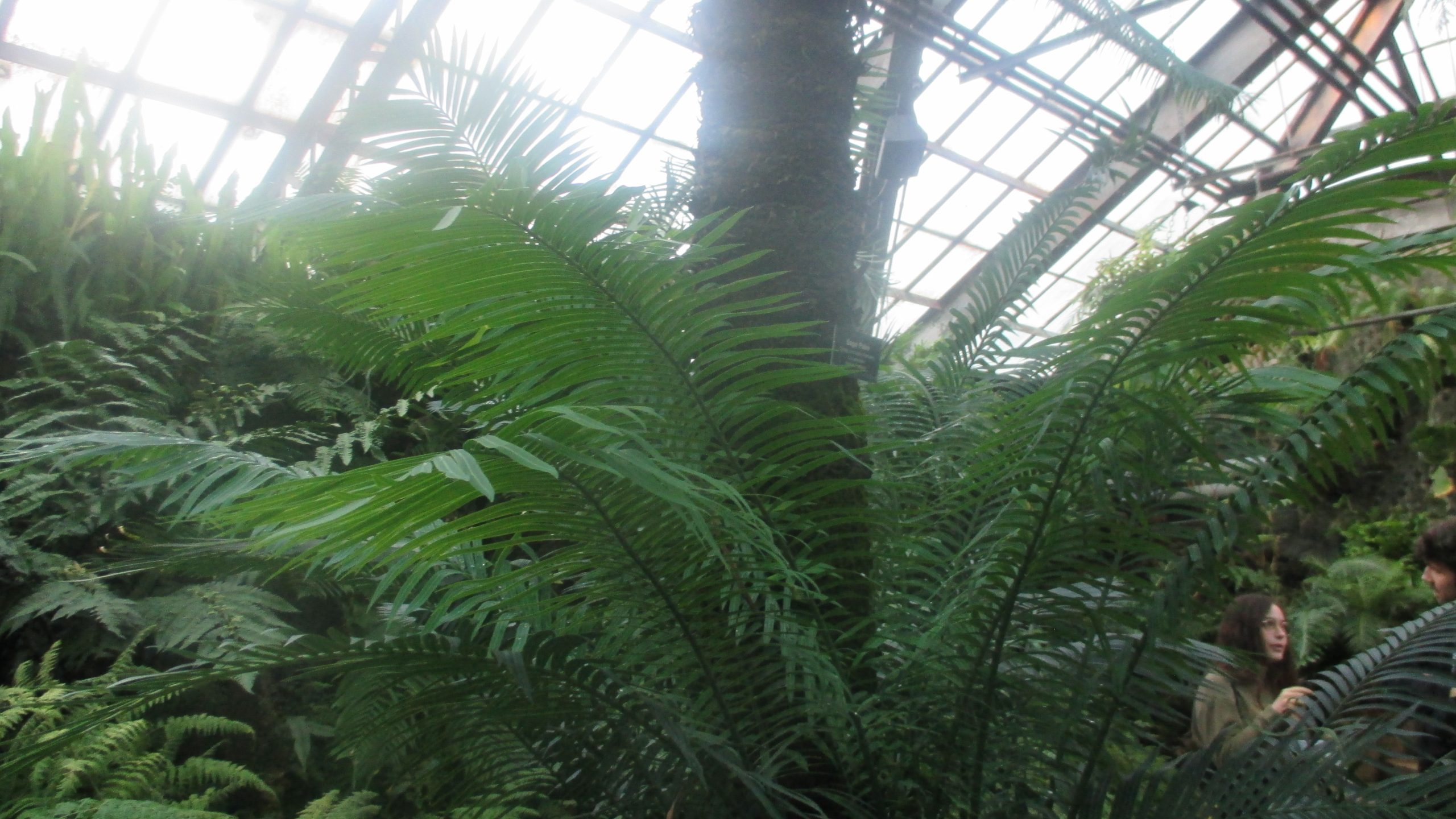As a fan of experimental art and music, I have seen Dorothy Carlos perform four times: the opening of the Everything Store at its former Pilsen location, The Arts Club of Chicago’s Fluxist anniversary celebration, and Centro Romero’s gallery space; and, most recently, I had the pleasure of stopping by the Lincoln Conservatory and listening to one her most recent pieces, My Ideal is Windy, a site-responsive installation inhabiting the Conservatory’s Fern Room.
Dorothy Carlos is an experimental cellist and electronic musician working in improvised performance and multi-channel sound in New York City and Chicago with a background studying classical cello and anthropology. Her work utilizes randomized electronics and extended techniques to explore fragility and imaginaries. Recent solo performances have been presented by e-flux, Experimental Sound Studio Chicago, Big Ears Festival, and the School of the Art Institute of Chicago. Last year, Dorothy released an album on the Chicago-based label American Dreams in collaboration with artist, Brian Oakes.
My Ideal Is Windy, commissioned by Experimental Sound Studio and the Chicago Park District, recalls the experimental Jazz pioneer and Chicago-transplant Sun Ra’s work, particularly his piece “Springtime in Chicago.” Carlos and Sun Ra’s work are sentimental, electric, sporadic, but concentrated, plume-like, static edges and fitting of their surroundings. Carlos strikes me as someone confident, intelligent, and mischievous. Carlos has an avante-garde spirit and singular approach to her work, which brings to mind many artists and musicians of an age (1920s-late1960s) that seemed all but lost to time, changing economies and ethos within the world of the arts, which made me all the more intrigued to perhaps know more about her.
Sonically, “My Ideal is Windy” felt like storm interference. Her work reminded me of geomagnetic storms considered in all of their parts: geology, magnets, and storm clouds, attracting things within a certain radius as they move from place to place and emitting waves of shock; electricity. To some, it’s magnetic, mesmerizing; to others not attuned, that may not be so, but that static remains in the air for all to feel and experience.
The installation was transformative in a way that was almost visual. The music made the ferns look as much like the ancient plants they are, as much as if they were prescient buzzing lightning rods, catchers or directors of electric signals.
Chicago remains a major city and cultural hub for the United States, often compared to the likes of Los Angeles and New York. Famed writer, television personality, food critic, and frequent traveler, Anthony Bourdain described Chicagoans as unpretentious people.1 They don’t feel the need to compare themselves to other places, make claims of superiority, while exuding pride and dignity and a centeredness. People come and go, or they stay, enamored; it’s a matter of making self-guided judgments versus succumbing to the mainstream.
My interest in developments around experimental music, Carlos’ singularity in style and technique, and her aptness for synthesizing ideas sonically, made me want to know more about her and her practice. So this past December, I reached out to Carlos in order to set up an interview at a cafe in Logan Square, which is recorded in the following.
This interview has been edited for grammar & clarity.
Nadia John: How would you describe your piece that is currently playing at Lincoln Conservatory?
Dorothy Carlos: They are sounds from recordings on cello. They come from a place that is personal and emotional; with performance, you get an opportunity to do what you want to do, what I want to do. I like having the opportunity to do what feels right to me. It’s pleasurable more than anything else.
NJ: How did this style of playing come about for you?
DC: I feel like I didn’t have practice. For three years, I used to be strictly classical and then with COVID, there was no opportunity to perform classical music so that forced me to be expressive in different ways and incorporating technology became an important thing especially, like multi-channel work. I missed being in a string ensemble and the string quartet experience. I used to live in an apartment that used to be half of a recording studio with a bunch of sound engineers. [My style] came from being around different people and kind of absorbing their way of doing things due to proximity.

NJ: Can you talk about how the piece at the Lincoln Conservatory came about?
DC: I was chosen as an artist in residence for Experimental Sound Station’s program with the Lincoln Conservatory. Before I recorded the music, I visited the space a couple of times, and I was able to play in the fern room, utilizing my improvisational practice.
NJ: What does Chicago and/or the Midwest mean to you, and how would you say it relates to your piece in the Fern Room?
DC: It was nice thinking about my family. They lived [in Chicago] when they first met shortly before I was born. It was a place where their relationship grew, and I was thinking about the ancient plant. I was thinking about growth and development.
Chicago feels really familiar. The energy is something I can see and feel in the vibe of my parents; it feels familiar, the Midwest. It is [also] surprising; it births people with niche interests. I am surprised by the people I meet here. The piece is pretty meditative and there are some weird moments. It is intentional with the movement because it is a place that many tourists go.
NJ: Is the cello the base or the root? What place does it have in your practice?
DC: The physical reality is that it is nestled into your body when you are a beginner when you play the cello you give it a hug that is the most comfortable position. So, the cello is like an extension of my body.
I use extended techniques, but also use [them] the “wrong” ways. [The cello] is pretty foundational or fundamental for my music. There are also sections where it is very vocal, but they are in the same sound range, i.e. the voice and cello.
NJ: [Are there any] artists or creators you are inspired by?
DC: Pamela Z. She uses a lot of delay which is an effect that is used in this piece [at the Lincoln Conservatory]. It is similarly emotional and versatile and very beautiful and pleasing to listen to and very challenging lyrically, using rhythmic music that is experiential more than anything else.
NJ: Are there artistic ideologies that inform your practice? What techniques do you employ?
DC: Thinking of distortion of time. A lot of the sounds used there is original improvisation. Quantization. Changing the time scale of a song. Using that [scale] throughout the whole piece. Thinking about distortion of time in different ways, in your mind physically, and using softwares.
NJ: Can you tell us a little bit about who you are and what you do? How long have you been making music?
DC: I’ve been playing music for fifteen years, but I started on violin. I chose cello because I think it looks cooler.
NJ: Do your parents have a background in music?
DC: No, they don’t.
NJ: When did you decide to go this route, career-wise?
DC: In high school. During my last two years of high school, I went to a state funded boarding school [University of North Carolina School of the Arts]. I started to see it as a possible career path then, due to guidance from teachers. That is when I got serious about it.

NJ: Do you have any thoughts to share around the Chicago music community? How would you describe it?
DC: It has been cool to get to know people in the dance music community. There is an industrial dance influence going on here. Going to shows like that has been cool and seeing how it permeates the city and the music played by musicians and DJ’s is cool.
NJ: Who are your inspirations?
DC: The process is very intuitive and, harmonically, the music is sounds that would naturally come to the cello—those are touch points that I try to highlight. So, outside of that, there is nothing in particular outside of subconscious synthesis and intuitive emotional expression.
NJ: What is your studio or workspace like?
DC: It is as simple as possible. I get overwhelmed by technology.
NJ: How does your background in anthropology inform your work?
DC: It weirdly makes my practice lean to being more personal. It is like self-exploration.
NJ: What are some goals you have in your creative work?
DC: [I] love the idea of playing a really big hall, just solo. I love being able to play really loud and it prompted me to switch. I used to play acoustic before practicing with an electric cello I can be as loud as I want. Being really loud is exciting. I love performing. I would like to travel more.
NJ: Is there anything you are currently working on that you would like to share?
DC: Working on more recorded music. Going to the Untitled Art Fair [where] I will be performing with a dancer.
“My Ideal is Windy” played in the Fern Garden through January 14. You can listen to the piece and a selection of Carlos’ recordings here. You can also catch Carlos performing at Elastic Arts Center on January 19th as part of their Pleiades Series.
Works Cited
- Jurewicz, Paul, dir. 2016. Season 7, episode 2, “Anthony Bourdain: Parts Unknown, Chicago.” Hosted by Anthony Bourdain. Excerpts of the episode can be accessed here: https://explorepartsunknown.com/destination/chicago/.

About the author: Nadia John (they/them) is a poet, arts administrator and member of the editorial collective, Sixty Inches from Center. They enjoy building community through the arts. Some of the interests which inform their work can be found between the intersections of narratology, Deleuzian potentialities and psycholinguistics. They have published four books of poetry, most recently, Long Form, by way of Hiding Press. Among other creative pursuits, they are currently working on a curatorial and creative project, inspired by the lyrical and musical structure of the album Apple Venus Volume 1 (1999) by XTC and the concept of the “eternal return”.



